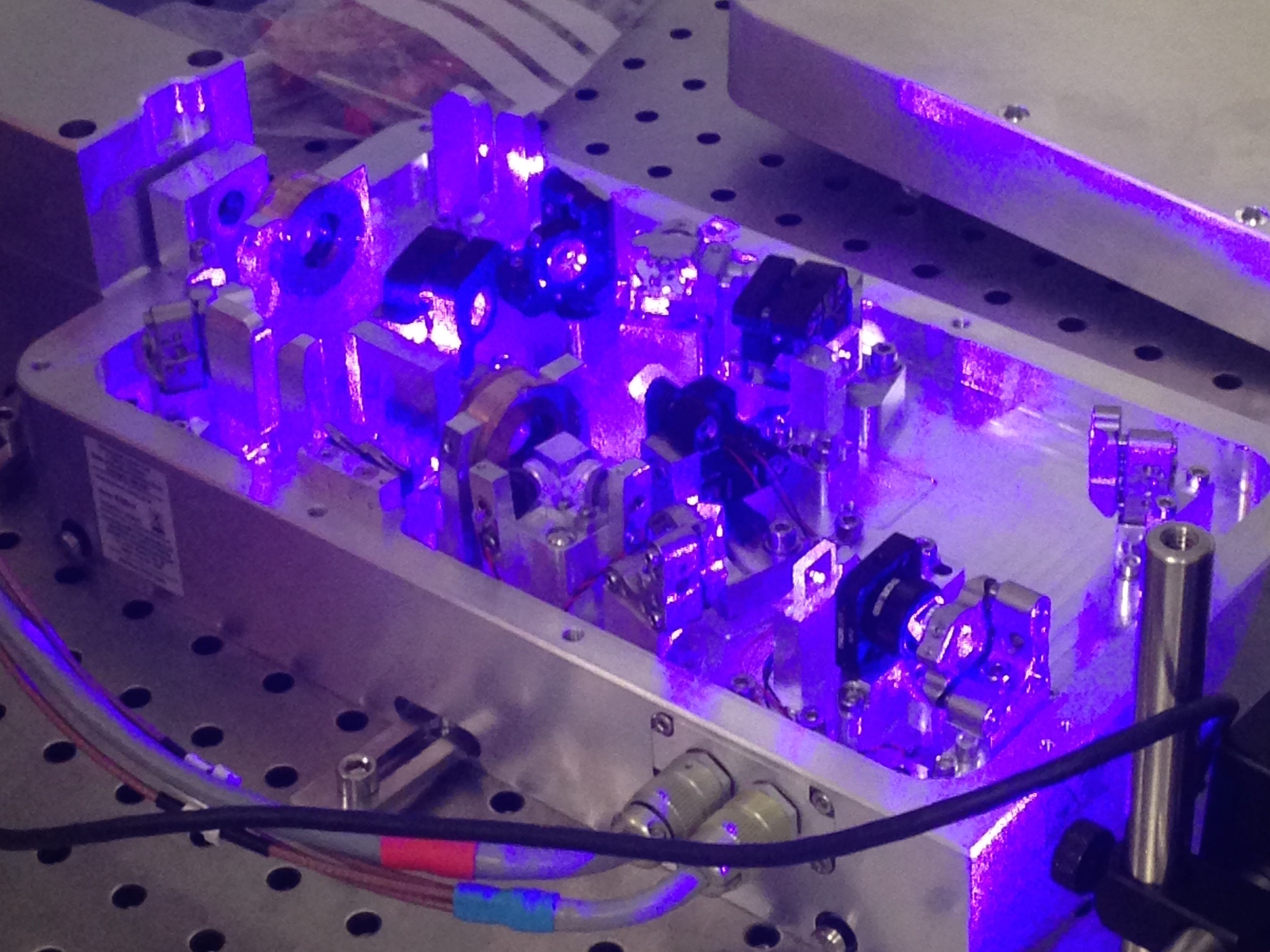ISOLDE dives deeper in the mystery of the odd-even staggering effect
 In a recent paper, to appear in Nature Physics in the next weeks (arXiv:1911.08765v3), the CRIS collaboration, located at the ISOLDE facility in CERN, presents measurements of charge radii of exotic copper isotopes that shed further light on one of the most pertinent open problems in nuclear theory; namely the accurate reproduction of the nuclear size and binding energy, and the odd-even staggering effect (OES) of these observables.
In a recent paper, to appear in Nature Physics in the next weeks (arXiv:1911.08765v3), the CRIS collaboration, located at the ISOLDE facility in CERN, presents measurements of charge radii of exotic copper isotopes that shed further light on one of the most pertinent open problems in nuclear theory; namely the accurate reproduction of the nuclear size and binding energy, and the odd-even staggering effect (OES) of these observables.
It has long been known that nuclear charge radii globally scale with A⅓ (where A is the number of nucleons in the nucleus). Careful measurements using high-resolution laser spectroscopy methods, reveal that on top of this global trend, there are small, yet measurable, changes in the radius as we move from a nucleus with an even number of neutrons (or protons) to its neighbor with an odd number of nucleons. These odd-even variations can be found throughout the nuclear landscape and many of them have been studied in the past 40 years at ISOLDE using the Collinear Laser Spectroscopy (COLLAPS) experimental beam line [1]. The development of nuclear theories which can model this OES accurately is an ongoing challenge. Furthermore, the OES phenomenon varies with the number of protons and neutrons, which amplifies the challenges for nuclear theory.
These puzzles continue to motivate a rich experimental programme to explore the exact mechanism at play and consequently deepen our understanding of the nuclear forces inside the nuclear medium. A pivotal role in this exploration is played by measurements of the properties of doubly-magic nuclei, or nuclei in their vicinity. Nuclei are said to have a magic number of protons or neutrons, when these nucleons fill complete shells (similar like the noble gas electron configurations in atoms). If the number of protons and the number of neutrons are both magic, the nucleus is said to be “doubly magic”. The nuclear chart shows that several doubly magic isotopes exist far from the so-called “valley of stability,” the region that comprises all stable and long-lived nuclei. Their study of these "exotic" doubly-magic isotopes and their immediate neighbors with a very unbalanced ratio of protons-to-neutrons, has been proven pivotal in deepening our understanding of nuclear forces and many-body dynamics.
The recent results reported by the ISOLDE team extend measurements of the charge radii of short-lived copper isotopes up to the very exotic 78Cu (Z = 29, N = 49) using the new Collinear Resonance Ionisation Spectroscopy (CRIS) method at ISOLDE-CERN. This nucleus is of particular importance, since it has only one additional valence proton and one valence neutron hole outside of a doubly magic 78Ni core; read more about how 78Cu provides insight into the structure of nickel in [2]. The presence of the odd proton provides crucial insights into the single-particle proton structure and how this affects the charge radii. Previously, the charge radii of copper isotopes could only be extracted experimentally up to 75Cu (N = 46) using the optical detection method in the COLLAPS experiment [3]. This isotope was produced at a rate of 30.000 ions per second. In order to study 78Cu which is produced at a rate of only 20 ions per second, the experimental sensitivity of the laser spectroscopy technique had to be improved with a factor of more than 1000. This is a reflection of a general trend in experimental nuclear physics: the study of the properties of isotopes close to exotic doubly closed shells (e.g. 78Ni and 100Sn) has so far been prohibitively difficult due to their very low production rates. Thus innovative methods have to be developed, that are much more sensitive than existing ones. The new paper by the CRIS group provides an answer to this key experimental challenge, by describing a more efficient method for measuring nuclear charge radii.
Experimental challenges and setup
To produce a sample of these short-living isotopes of interest, that does not contain too many other unwanted species, various steps at CERN’s ISOLDE facility have been employed. A beam of 1.4-GeV protons, produced by the CERN PS-Booster, was sent onto a neutron converter, producing neutrons which in turn induced fission of 238U atoms. Hundreds of radioactive isotopes were produced which diffused out of the very hot target into an ion source. The element-selective resonance ionization laser ion source (RILIS) produced ions of all the Cu isotopes, which were accelerated to 30 keV in preparation for mass separation. Using ISOLDE’s High Resolution Separator, ions with different mass-to-charge ratios are separated and guided to ISCOOL, a linear gas-filled RF trap where they are accumulated for up to 10 ms. The selected ions are then released in a short bunch (few microseconds long) and guided into ISOLDE’s Collinear Resonance Ionisation Spectroscopy (CRIS) experiment [4]. There the ions were neutralized through a charge-exchange reaction with a potassium vapor, and entered into an ultra-high vacuum region. In that UHV region, the atom beam is overlapped with two laser beams. The first laser beam excites the atoms of Cu using a 249 nm wavelength, with a laser frequency that is fine tuned to excite a specific isotope of Cu. These excited atoms are further excited into an auto-ionising state, chosen for optimal ionization efficiency so that at the end of the beam line, these resonantly-excited ions can be deflected from the other species that are present in the beam. This allows to count in a quasi background free environment the number of ions that were created, as a function of the wavelength of the first laser beam.

Figure 1: Values of the mean square radius for 63−66,68−78 Cu (relative to 65Cu) from this work as a function of neutron number N, alongside the literature values for 58−62,67Cu. The inset shows the OES of the radii. Error bars are statistical (one standard deviation). In the main plot, these errors are too small to be seen except for 78Cu. The blue shaded area represents the systematic uncertainty due to the atomic parameters (Credits: ISOLDE Collaboration).
Results
Using ISOLDE’s unique capabilities to produce and manipulate radioactive ions, and the inherently high efficiency and selectivity of the CRIS method, the team obtained for the first time new measurements of the hyperfine structure of the copper atoms up to N=49. The high efficiency and selectivity of the CRIS technique allows the observation of signals with detection rates of less than 0.05 ions/s on resonance. These detection rates were sufficient for a successful measurement of the charge radius of 78Cu in less than one day, while in the case of other isotopes only a few hours of beam time were required.

Figure 2: CRIS experiment uses lasers to probe the hyperfine structure of the atom of interest. When the lasers are on the correct frequency, they step-wise excite and ionize an electron from the atom (Credits: CRIS/iSOLDE Collaboration).
From this dataset, the changes in the mean-squared charge radius of these isotopes could be derived. The results extend the knowledge of the charge radii of the copper isotopes by another three neutron numbers, up to 78Cu (N = 49). The new data thus represent an important step towards understanding of the nuclear sizes in close proximity to the very neutron-rich doubly magic system of 78Ni. The new results enable a detailed study of the state-of-the-art in nuclear theory, in an area of the nuclear chart where radius predictions of these theories have so far not been evaluated in detail. Analysis of data show how modern Density Functional Theory (DFT) and the Valence-Space In-Medium Similarity Renormalization Group (VS-IMSRG) frameworks can both be used to explore the OES for the copper isotopic chain between neutron numbers N=29 and N=49.
Both theoretical methods show exceptional capabilities in reproducing the radii and the OES effect. Given the complexity of the medium-mass copper nuclei, and the presence of the unpaired valence proton, this work also represents a milestone for nuclear theory. From the comparison of the theoretical calculations, the relation between the global behaviour of charge radii and the saturation density of nuclear matter is demonstrated. Furthermore, the local charge radii variations, which reflect the many-body polarization effects, naturally emerge from A-body calculations fitted to properties of A ≤ 4 nuclei. These observations provide an important step in the understanding of the nuclear binding energy and charge radii, and thus a major milestone on the path towards a predictive nuclear theory.
Comparison with heavier odd-Z systems near the heaviest self-conjugate isotope 100Sn are expected to provide the next challenge. Using the experimental developments that were made for the study of the copper isotopes, these nuclei near 100Sn can now be studied experimentally over a range or more than 30 isotopes.
Note: The author would like to thank Ruben de Groote and Gerda Neyens for their useful comments and feedback.
Further Reading:
[1] J. Phys. G: Nucl. Part. Phys. 44 (2017) 064002 (21pp) https://doi.org/10.1088/1361-6471/aa6642
[2] R. P. de Groote et al, Phys. Rev. C 96, 041302(R) (2017)
[3] M. L. Bissell et al, Phys. Rev. C 93, 064318 (2016)
[4] K.T. Flanagan et al., Phys. Rev. Lett. 111, 212501 (2013)
